Der Cmyk-Farbraum, 2015
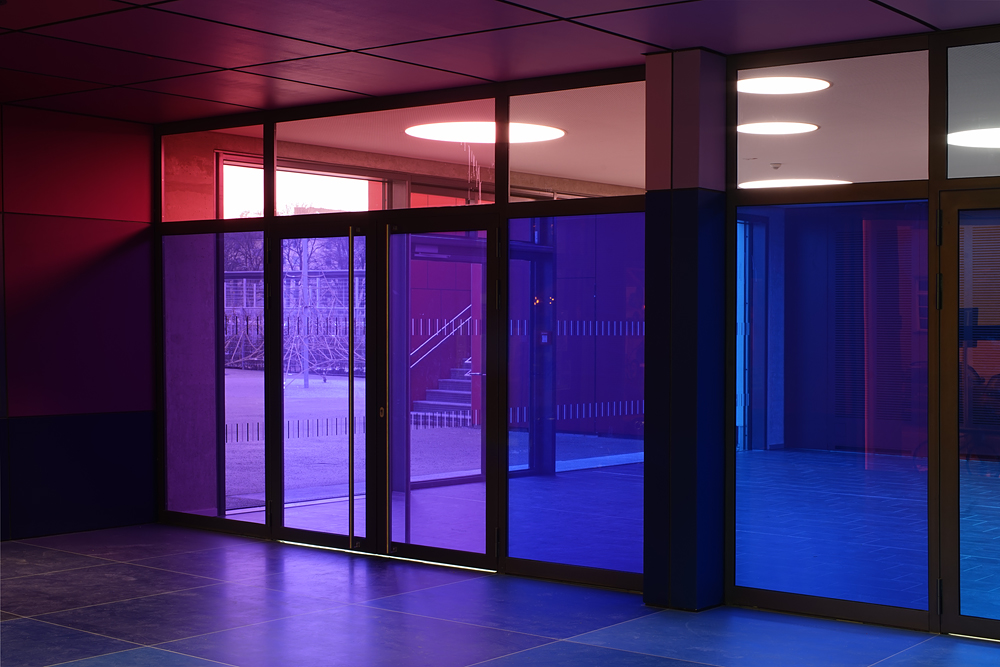
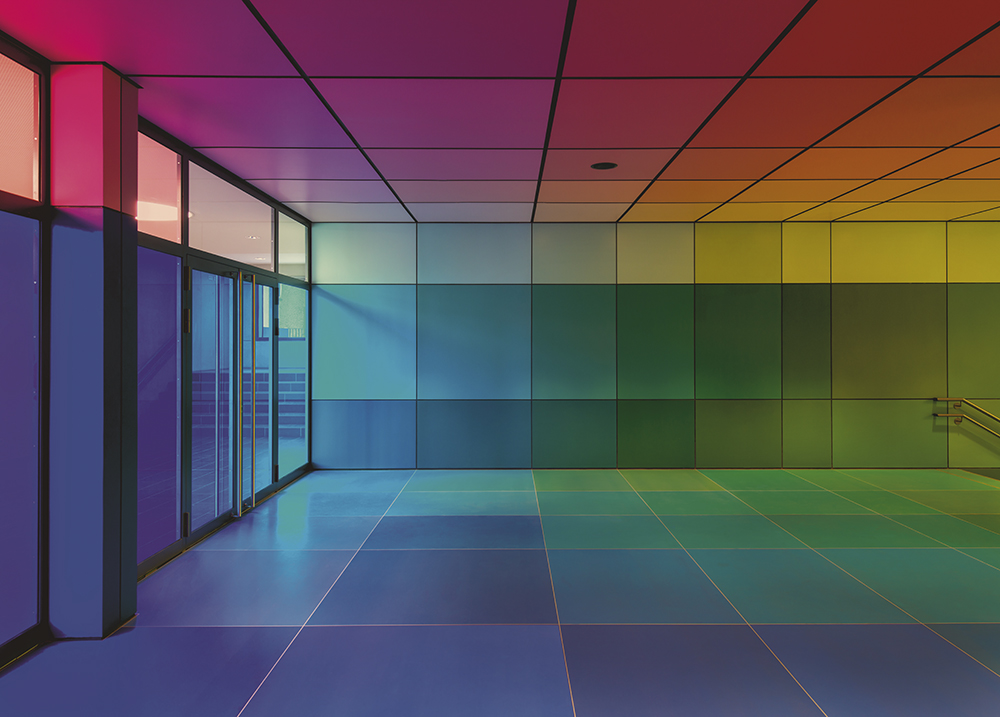
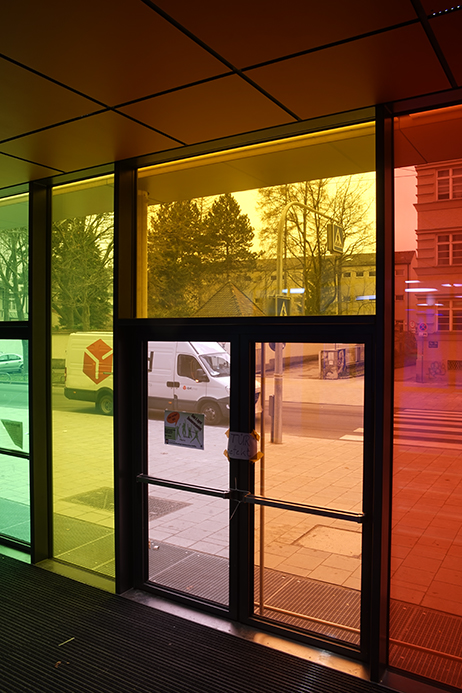
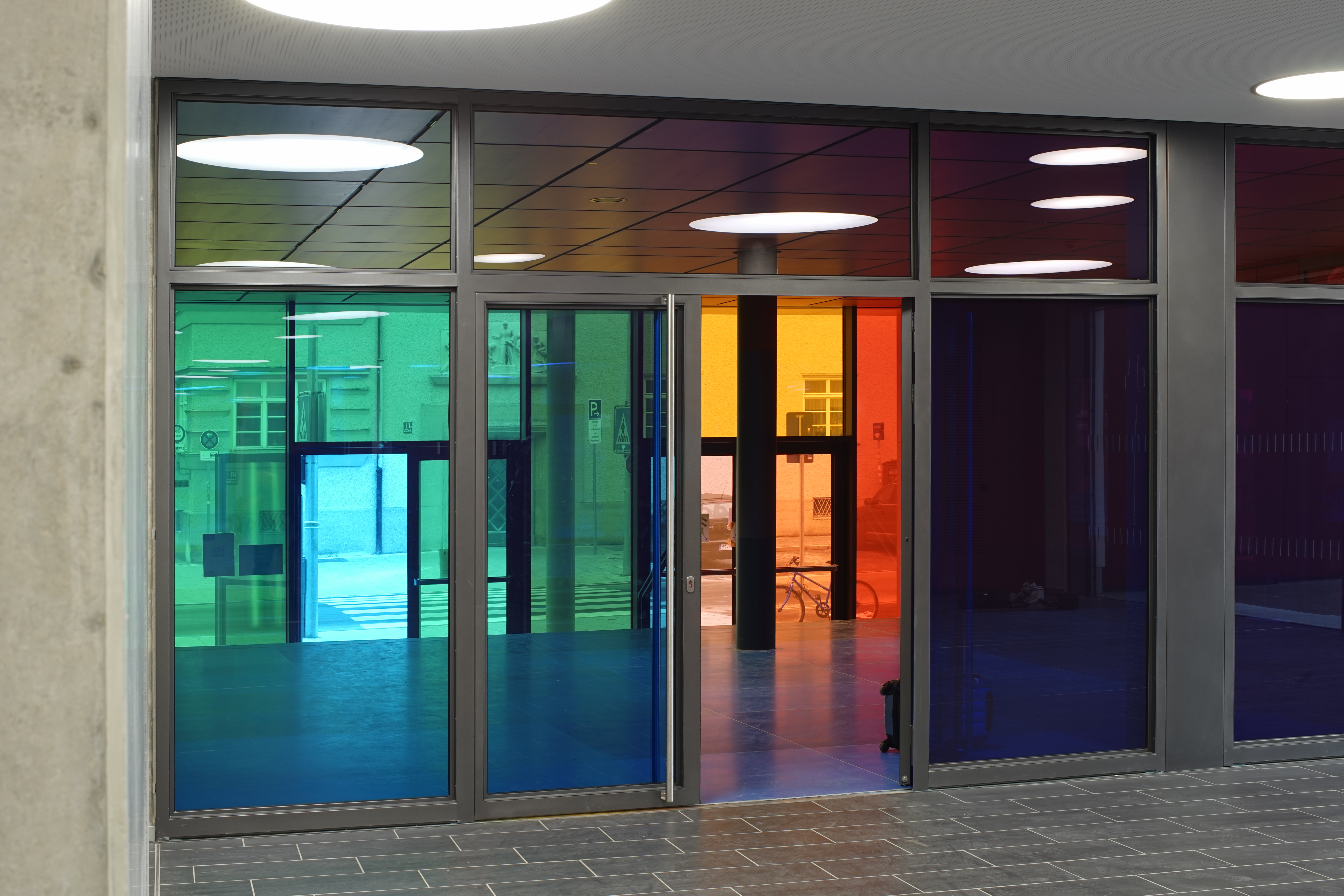
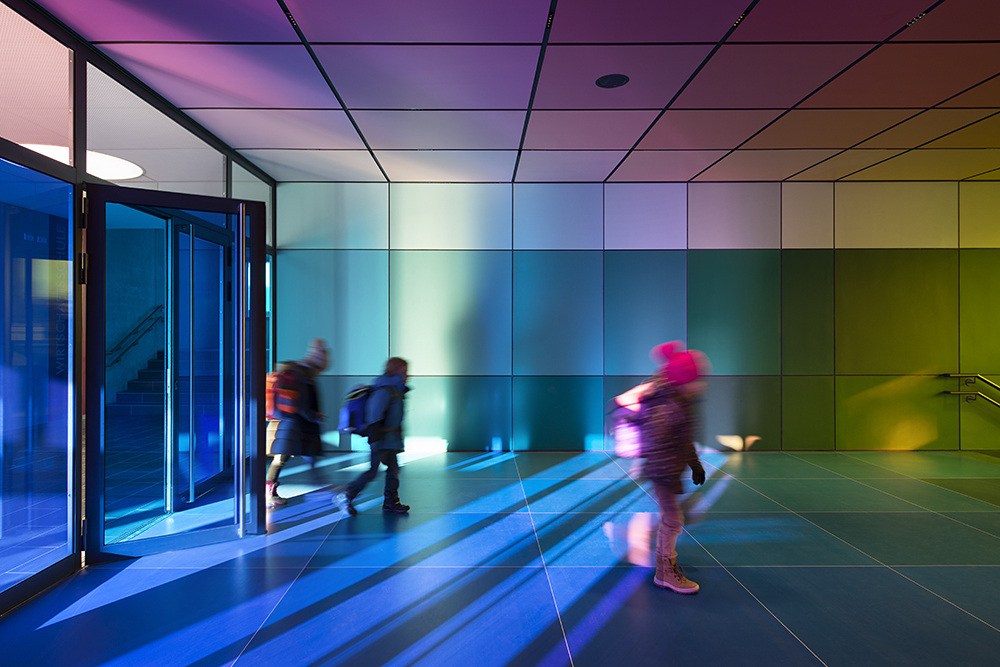
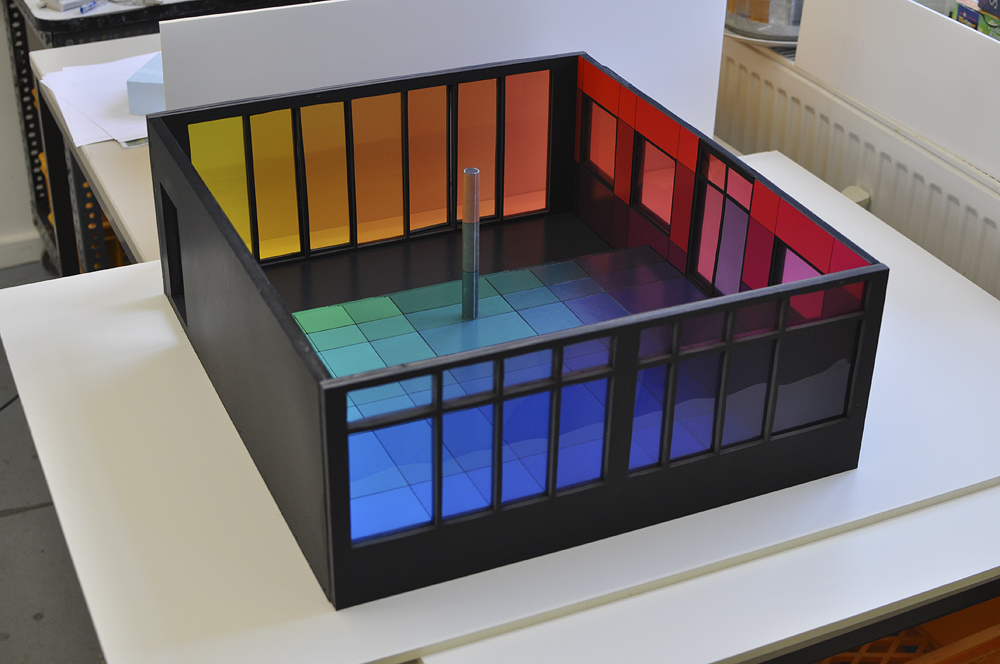
Der Cmyk-Farbraum
public art at Meindlschule München
realized in 2015
Farbenlehre als Erlebnisraum
Für die Meindlschule in München habe ich den Eingangsbereich als Cmyk-Farbmodell gestaltet.
Das Farbmodell, welches ein theoretisches Objekt ist, wird somit als Raum begehbar gemacht. Der Cmyk-Farbraum kennzeichnet die Schule nach außen hin als Ort des Lernens und ermöglicht den Nutzern des Multifunktionsgebäudes sich leichter damit zu identifizieren. Hier wird die Farbenlehre zum Symbol und weist mit ihrer Vielfarbigkeit auf die Vielfältigkeit der untergebrachten Bereiche hin.
Wir erfahren die Außenwelt über unsere Sinne, wobei sich über den Sehsinn der Großteil aller Informationen erschließt. Dabei ist die Wahrnehmung von Farben von ausschlaggebender Bedeutung. Die Farbenlehre ergründet die Prozesse beim Farbensehen und leitet davon Farbmischgesetze ab, die im Mehrfarbendruck, in der Fotografie, im Fernsehen und am Bildschirm Anwendung findet. Im heutigen Informationszeitalter ist die Farbenlehre somit von wachsender Bedeutung und soll hier physisch und sinnlich erfahrbar gemacht werden.
Modell und Systematik - zwischen Kunst und Wissenschaft
Das Cmyk-Modell erläutert die subtraktive Farbmischung und bildet die Grundlage für den heutigen Vierfarbdruck. Modelle sind im Lernprozess unabdingbar. Durch sie können komplizierte Vorgänge vereinfacht und veranschaulicht werden. Bei meinem Gesamtraumkonzept wird das Schematische, Modellhafte und Theoretische zum sinnlichen Wahrnehmungserlebnis. Die Regeln des Farbenmischens und der Farbkontraste können hier visuell erforscht werden, z.B. in der Durchsicht durch farbige Glasscheiben auf farbige Wände oder durch das Erproben von Komplementär- und Sukzessivkontrasten. Die Farbnuancen sind in eine logische Struktur, in ein Ordnungssystem eingebunden, wodurch ein harmonischer Eindruck hervorgerufen wird.
Die Farbenlehre ist ein komplexes Wissensgebiet, das unterschiedliche Bereiche berührt: Kunst, Psychologie, Biologie, Physik und Chemie. Im Biologieunterricht erfährt man, daß die Grundfarben rot, grün und blau den drei Zapfentypen im menschlichen Auge entsprechen, deren Reizung und Umwandlung in elektrische Signale erst im Gehirn den Eindruck einer Farbe entstehen lässt. Im Physikunterricht wird das Wissen, daß Farben per se nicht existieren, dadurch erweitert, daß bestimmte Energiestrahlen mit Wellenlängen zwischen 400 und 700nm als farbiges Licht empfunden werden, welche dann im Chemieunterricht als molekulare Eigenschaften von Oberflächen wieder auftauchen.
Color theory as experiential space
For the school building at the Meindlstraße in Munich, I propose to make the front entrance area into a cmyk color model.
In my proposal I wish to make the color model, which is a theoretical object, accessible to the viewer as real space. The color model entrance demonstrates to the outside world that the school is a dynamic place of learning and allows users of this multi-function building to more easily identify with it. Here, color theory is a symbol indicating the diversity of the departments inside with its bold spectrum..
We experience the outside world through our senses, where we receive the majority of this information through the sense of sight. Thereby the perception of color is of significant importance. Color theory explores the human processes of recognizing color and translates them into rules for mixing color, which is then applied to systems such as multi-color printing, photography, television, and the projection screen. In today's information age, color theory is therefore of growing importance, and is made tangible in the color model room in a physical and sensual way.
Model and systematics - between art and science
The cmyk model explains the subtractive color mixture that forms the basis for today's ubiquitous four-color printing method. Models are essential in the learning process. Through them, complicated operations can be simplified and illustrated. My complete room concept creates a sensual and perceptual experience of the schematic, exemplary and theoretical principles of color theory. The rules of color mixing and color contrasts can be explored visually here, for example, through viewing combinations of colored glass panels on colored walls, or through the testing of complementary and successive contrasts. The shades are integrated into a logical structure and an ordered system, generating a harmonious feeling.
Furthermore, color theory is a complex topic that influences many different areas: art, psychology, biology, physics and chemistry. For example, in biology class we learn that the primary colors, red, green and blue, are the three types of cones in the human eye; the stimulation of these colors are first converted in the brain into electrical signals that then create the impression of a color. In physics we learn that colors do not exist per se, but that we perceive certain energy rays at wavelengths between 400 and 700nm that appear as colored light, which then show up again in our chemistry classroom as molecular properties of surfaces.